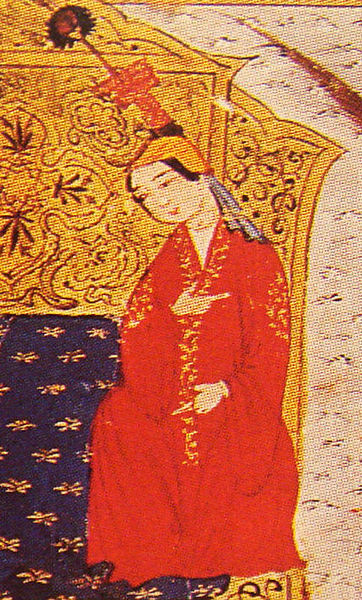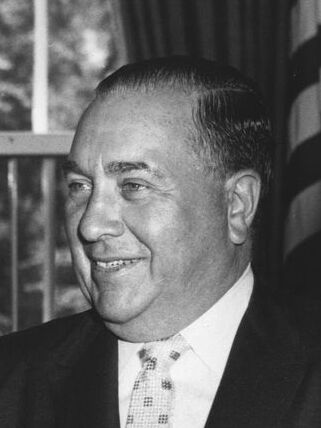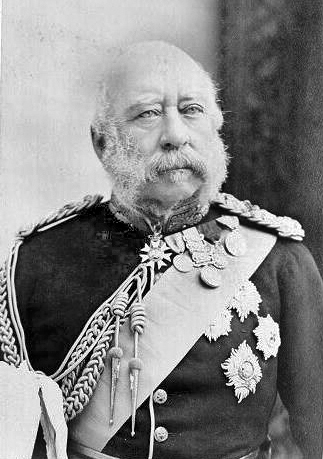
OUT TO PASTURE
June 1, 1533
London, England
Now that King Henry’s new wife, Anne, has been crowned queen, what will become of his old wife, Katherine? Though it’s impossible to believe, the stubborn Spaniard Katherine will not agree to use her new official title- the Dowager Princess Katherine. She continues to call herself the Queen, and demands that anyone in her presence refer to her as such!
Despite Henry being backed by the Pope, the parliament, and the people, Katherine still blames Henry for turning her out.
The king had no choice. He had to put away Katherine when the leading experts in canon law decided that he must.
Their decision was made after an exhaustive discussion under the watchful eye of the kindly Henry, Defender of the Faith.
This discussion was necessary when Henry, always a stickler for propriety, remembered that they had been married contrary to Levitical Law, because she had been married to his brother.
Helping him remember this was Anne Boleyn, now Queen Anne.
Henry of course is not a man to put aside a wife frivolously; but as God’s representative on Earth for the kingdom of England, the King believed this was a step he must take, for the good of the realm. And because he takes the Bible so seriously, he came to understand why God had not granted him a son with Katherine: the marriage was not sanctioned by Heaven. Now that he has entered into a proper marriage, he and Anne will surely be blessed with a long and happy union, which will soon produce a young Henry IV.
Anne appears favored of God and able to produce a male heir for England. The King himself is smiling more lately, eager to be granted some of this favor.
But seriously…
December 31, 2021
In 1533, King Henry VIII was in the prime of his life: fit, vigorous, and charming- not the bloated slothful wastrel he would become. He was used to getting what he wanted. And he wanted Anne Boleyn.
Anne was clever, cunning, and patient. It took her eight years to land Henry. She refused (at least for a while) all his sexual advances, which made him want her more. Unlike her sister, who had been the King’s mistress, and had been thrown away then he grew bored with her.
Standing in the shadow of these two dynamic figures was a woman every bit as formidable as they were. But while they schemed and grasped, Katherine of Aragon stood her ground and earned the respect of all who knew her. Raised in the Alhambra, the last holdout of Moslem power in Spain, Catalina was the daughter of Isabelle and Ferdinand, the royal couple who sent Columbus to the New World.
They also sent their Catalina to a new world, to be the wife of a prince named after the legendary King Arthur. (Along with learning English, Katherine had to accustom herself to drinking wine, because the water in England was undrinkable.)
When Prince Arthur died very early in their marriage, it was decided that Katherine would marry Arthur’s younger brother, Henry. This was decided by Katherine’s father, Ferdinand, and Arthur’s father, Henry VII, who both used Katherine as a pawn in their personal battle- each man trying to wrangle the best deal he could out of the marriage contract. Henry always wanted more money. (He was so stingy that when his wife asked him for money, he agreed to float her a loan, but only if she put up her personal plate, or silver, as collateral.)
It was at this time that Katherine, who had arrived in England a helpless young girl at the mercy of powerful men, showed that she could play the power game. While appealing to the sympathy and egos of the two headstrong kings, she cultivated allies in her adopted country and got messages smuggled into Spain, past Henry’s customs agents.
She married young Henry (six years her junior), and reigned as queen for almost fourteen years.
So, when Henry VIII decided to divorce Katherine, he should have known it wouldn’t be easy.
Katherine appealed to the Pope. Henry responded by having an army sent to Rome, to help convince the pontiff, who only stalled, refusing to make a decision. Henry then tried to get the leading clerics in England to side with him. Rebuffed by those with stalwart consciences, he was able to pressure enough of them, including Cardinal Wolsey, to annul his marriage.
Still, the old Queen was not one to be pushed around. Anne was about to be elevated to the peerage, and she asked Katherine, in whose household she had served as a girl, if she could wear her (personal) jewels for the ceremony. Her reply said it all:
“I would consider it a sin and a load upon my conscience if I were persuaded to give up my jewels for such a wicked purpose as that of ornamenting a person who is the scandal of Christendom and is bringing vituperation upon the king.”
Anne, put in her place, won the next battle. Katherine had been crowned with Queen Edith’s crown. Anne was crowned with Saint Edward’s crown. Never before had a king’s crown sat on a queen’s head.
Henry was smitten. The man who always got what he wanted was now at the mercy of a woman who craved a crown.
The Spanish ambassador to England, Eustace Chapuys, noted the spell Anne had cast over Henry:
“The Lady commands absolutely and her will is done in all things. The king cannot be one hour away from her.”
Henry courted all his wives (all six of them) and his mistresses (there were many) as a chivalric knight. He was a lecher, but a romantic lecher.
Anne was a fervent believer in what was then termed “Lutheranism.” She supported efforts to translate the Bible into English, among other things.
She pleaded for offenders; no heretic was executed while she reigned.
She also held a grudge against Cardinal Wolsey, who had been the most powerful man in England after Henry. He had banned and burned all of Luther’s books, but that wasn’t all he did. In 1523 had Wolsey publicly humiliated Anne. She never forgot. She persuaded Henry to have him killed.
Anne the Lutheran was unpopular with the people of Catholic England; she had usurped the place of their beloved queen. But they got the last laugh. Intertwined on her fine carriage, as she rode among the crowds, were the initials H and A, for Henry and Anne. The commonfolk, seeing this, would shout out, “HA! HA!”
Katherine was as strong a believer in Catholicism as Anne was in Lutheranism. Devout like her mother, she wore the hairshirt of the third order of St Francis. It was her unwillingness to be divorced that prompted Henry to appeal to the Pope, whom Katherine saw as the only person on earth who could decide such a case. And it was the Pope’s (eventual) ruling against Henry that caused him to break from the Catholic church, and start the Church of England.
Even after he broke with the church, he continued to use the honorific, “Defender of the Faith,” a title given to him in 1521 by the Pope.
So, it was a principled stand by a stalwart Catholic named Katherine that set in motion the removal of an entire country from the Catholic fold.
Katherine and Anne both died three years later. Katherine passed away quietly, surrounded by loved ones; Anne’s life was taken on a scaffold with many onlookers who had never before witnessed the beheading of a queen. She was celebrated by the poet Thomas Wyatt, who sat in the Tower of London overlooking her scaffold. Henry had locked him up out of jealousy.
Wyatt’s last love poem to Anne:
Who list her hunt, I put him out of doubt;
As well as I may spend his time in vain.
And graven with diamonds, in letters plain,
There is written her fair neck round about:
Noli me tangere, for Caesar’s I am,
And wild for to hold, though I seem tame.
Katherine was also paid tribute to, by Thomas Cromwell, one of Henry’s pit bulls, who would later become Vicar General:
Sources
The Six Wives of Henry VIII, Alison Weir
Sister Queens, Julia Fox





